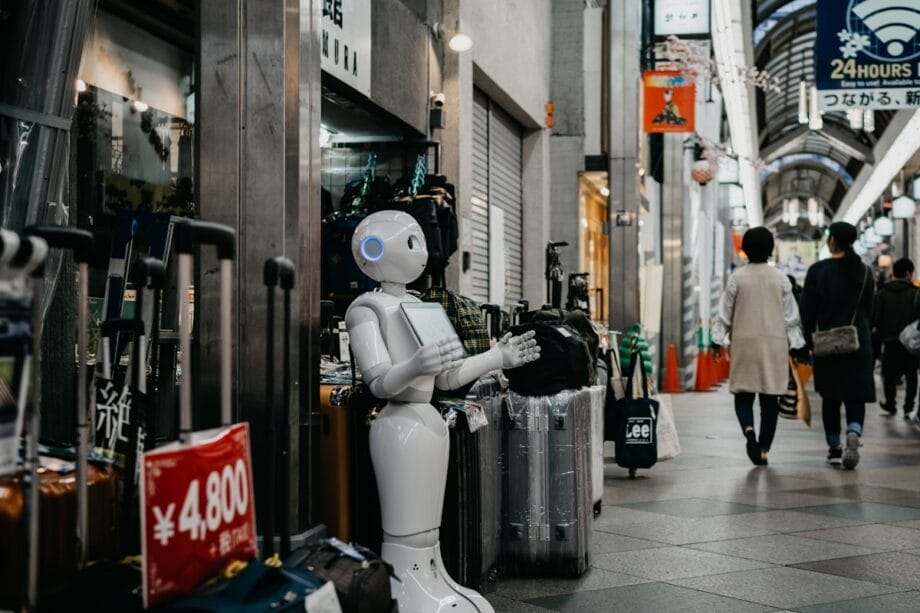The Impact of AI on Job Training: A Closer Look
The trepidation surrounding artificial intelligence (AI) and its potential to displace workers is palpable. However, a recent survey from the Federal Reserve Bank of New York unveils a more optimistic narrative: many organizations implementing AI technology are opting to retrain employees rather than resorting to layoffs.
Yet, the effectiveness of existing job-training initiatives in equipping workers to navigate a rapidly changing employment landscape remains underexplored.
A new working paper endeavors to bridge this research gap. The investigative team, which includes doctoral candidate Karen Ni from the Harvard Kennedy School, examined workforce outcomes post-participation in training programs governed by the U.S. Workforce Innovation and Opportunity Act.
Their study meticulously scrutinized administrative earnings data from periods both preceding and succeeding the training phases, particularly focusing on transitions into occupations that are significantly exposed to AI—those tasks prone to automation through traditional computing and generative AI.
The findings indicate that these training programs generally yield beneficial outcomes, with displaced workers experiencing enhanced earnings upon shifting to new roles. Nevertheless, it was observed that earnings were comparatively lower for individuals targeting occupations with high AI exposure, as opposed to those entering less AI-inclined fields.
In a recent discussion, Ni elaborated on the crucial function of job-training programs in light of AI’s transformative impact on the labor market.
Questions Addressing the Role of Retraining in AI Disruption
With widespread concerns about job displacement due to AI, why did you specifically choose to investigate retraining?
Understanding the extensive implications of emergent technologies on employment is vital. Our inquiry centers on whether it is feasible to aid workers displaced by such technologies in transitioning into viable job roles.
We were particularly focused on how job-training services could enhance their prospects, elevate their earnings, and potentially prepare them for high AI-exposed occupations.
Our goal was to document the adaptability of displaced workers, especially among lower-income demographics. This could inform how we enhance support for these individuals, whether through improved investment in workforce development or by recalibrating training programs to meet the evolving demands of the labor market.
“We wanted to help document the transition and adaptability for these displaced workers, especially those who are lower income.”
What insights can be gleaned from evaluating government workforce development program data?
The national scope of our trainee sample allows for a comprehensive analysis, showcasing considerable variation in occupational backgrounds. Predominantly, our dataset comprises lower-income displaced workers, earning an average of $40,000 annually.
While some participants make significant occupational shifts, many revert to similar roles, likely seeking new skills or credentials to aid their reintegration. Displacement may be attributed to AI, but it can also stem from various factors, such as regional office closures.
Could you illustrate the distinction between high and low AI-exposed careers?
AI exposure denotes the degree to which an occupation’s tasks might be performed by machines. Among our cohort, prevalent high AI-exposed positions included roles such as customer service representatives, cashiers, and office clerks.
Conversely, manual labor jobs like movers, industrial truck drivers, and packagers fell into the low AI exposure category.
AI Retrainability by Occupation

What were your key findings?
Our analysis revealed significant differences based on pre-training occupations. Post-training, earnings showed favorable returns overall; however, workers transitioning from high AI-exposed jobs garnered, on average, 25 percent lower earnings than those coming from low AI-exposed sectors.
Additionally, when disaggregating post-training outcomes, it became apparent that workers aiming for low AI-exposed roles generally reaped more substantial benefits compared to those pursuing high AI-exposed positions, with the latter group facing a 29 percent earnings detriment.
What practical advice could you offer to displaced workers based on these findings?
Our findings suggest that AI-exposed workers might experience improved outcomes by targeting less AI-exposed positions. Nonetheless, the positive returns across all demographics indicate that numerous variables warrant consideration—specifically the nature of training received, skill sets targeted, and the heterogeneity of job-training centers nationwide.
It’s essential to note that our study primarily addresses displaced workers from lower-income strata, cautioning against generalized recommendations for all job-training aspirants.
You also developed an AI Retrainability Index to assess occupations in terms of their suitability for retraining toward highly AI-exposed roles. What were its revelations?
The index provides a metric for evaluating retrainability across various occupations. Three categories emerged as particularly amenable to retraining: legal, computation and mathematics, and arts, design, and media.
This suggests that individuals transitioning from legal professions exhibit a greater capacity for retraining toward lucrative, AI-centric careers than those from customer service backgrounds.
Significantly, our research indicates that 25 to 40 percent of occupations are retrainable in the context of AI, a figure that may challenge assumptions about the retraining feasibility for lower-wage job holders. Our findings illuminate a promising potential for effective retraining strategies.
Source link: News.harvard.edu.






